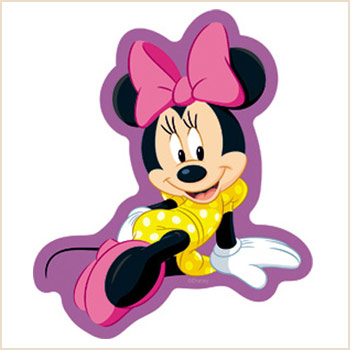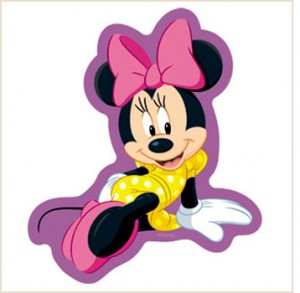

Disney has been a huge influence in the lives of American children. Long revered by the American public, Disney has come to be closely associated to childhood. It is common for children to grow up with ideas and hopes of becoming a prince or princess. These beliefs are instilled by Disney.
Rob Phillips, a Cultural Media Literacy and English teacher at Leesville Road High School, sees this as a problematic situation.
“The primary issue I have [with Disney] is that when a small number of people can control and dictate what we see in media, it isn’t good for anybody,” said Phillips. “People are passive when it comes to Disney because there’s a sheen and a gloss we associate with childhood and family. Talking bad about Disney makes you seem like a jerk. That, on Disney’s part, is brilliant. But they have a history of presenting images that are racist, xenophobic, gender insensitive… Kids absorb that information without being able to evaluate it critically.”
A contemporary example from Disney would be Hannah Montana. Pretty, funny, famous and good at wooing the opposite gender, Hannah Montana is someone to look up to for many young girls. She hides her real identity — Miley Stewart — from the public with a wig, lots of make-up and glamorous clothing. Even though Hannah hides behind her physical appearance, she is smart enough to keep her identity hidden, strong and able to make decisions. Are looks and expensive clothing what will get you by in life, or are children able to recognize the good parts of Hannah? Does observing the teen go through her life make children want to be like her? Phillips says yes.
“[Disney] teaches [children] a narrow world view before they can develop their own independent world view,” said Phillips. “Disney is even fighting to market in nursery wards now. Marketing to kids is inappropriate and unlawful in so many countries, but in America we give so much credence to the free market that we don’t put limits on it. They’ve done studies and kids haven’t been able to tell the difference between broadcasting time and commercials. Markets take advantage of that. These cartoons are made by adults who want to take your money.”
Disney is relished in many places: even at Leesville Road High School. Homecoming this year consisted of all things Disney. Spirit week included three days that were Disney-based: Good vs. Evil Day, Tacky Disney Tourist Day and Black-and-White Day. The Homecoming dance was abound with Disney decorations, such as images from the Disney movies Cars, Tangled and Cinderella. Minnie Mouse was posted on the wall in her usual garb.
Tales of the “common man” prevailing as the protagonist are abundant in Disney. Many of the stories start out with an average person who becomes royalty. For example, the tale of the Aladdin rings true to this message: Aladdin begins as a street urchin, and with the help of a genie’s magic, becomes a prince. Additionally there’s the story of Cinderella: a girl who starts out as a maid, but, via help of her fairy godmother, meets a prince and wins him over.
People don’t want to see the negative side of Disney. As said by Phillips, “talking bad about Disney makes you seem like a jerk.” Since Disney is so widely accepted by Americans, rejecting it paints a person in a negative and distasteful light. This gives the company the upper hand on the public.
“Disney is an extremely problematic corporation,” said James Murdock, a 2010 Leesville graduate and student of Mr. Phillips’ Cultural Media Literacy class. “For one, their movies send the wrong messages to the youth watching them, such as Ariel in the Little Mermaid – she changed her physical form just to get the attention of a man. Or like Belle from Beauty and the Beast: she’s in what some would call an abusive relationship, but then she decides that it’s her fault, and she ends up taking the blame and ‘accepting’ him for the jerk he is.”
Many Americans cherish Disney and don’t recognize its chokehold on American media. Disney is able to control what people see in the media, and henceforth influence their world view and opinions if they aren’t able to evaluate the information they see critically.
“[Disney] owns ABC news, ESPN, several radio stations and more. This makes them able to figuratively shove their opinions down your throat. Their movie didn’t do too good? No problem, they just advertise it like crazy on their radio stations, play trailers for it on ABC and write favorable reviews in the magazines they own,” said Murdock. “Disney also utilizes child labor in Haiti, Vietnam and China.”
According to the IHS Child Slave Labor Network, girls stitch Aladdin T-shirts for twenty-eight cents an hour in Haiti – six cents an hour in Burma. In Vietnam, 17-year-old girls make seventeen cents an hour making toys. 101 Dalmatians and Lion King shirts are made in a factory in Bangkok by children who work 72 hours per week. The CEO of the Disney Corporation, Michael Eisner, makes about $102,000 per hour.
“One corporation with that much influence is dangerous, especially to the youth. You can’t really ‘censor’ their movies for problematic themes without being un-American or a terrorist,” said Murdock. “I think the best course of action would be to try and educate parents about these problems and hope they care enough about their children to not just sit their kid in front of a movie and let them absorb these themes.”
In essence, Phillips and Murdock believe the public needs to be protected from Disney. Children and teenagers easily absorb what they see on television, in magazines, on the Internet and in movies. Adults, parents and children need to be educated about what this media is really saying; Disney’s messages need to be taken with a grain of salt.
However, Phillips’ and Murdock’s views are slightly exaggerated. As children grow up, they begin to face reality and see that becoming princes and princesses are no longer possible, that there won’t be any magic to help them along the way, and that happy endings don’t always turn out the way they should.
“Disney is my childhood,” said Emily Yoo, sophomore. “It had an influence on me when I was little. I wanted to be a princess. It doesn’t have as much of an influence on me now because I’m older; you have to differentiate reality from fantasy.”
In conclusion, Phillips overlooks the fact that Disney is only feeding the public what they want: a happy ending. The ideas and beliefs seen in Disney shows and movies do not shape society, but copy what society has become.